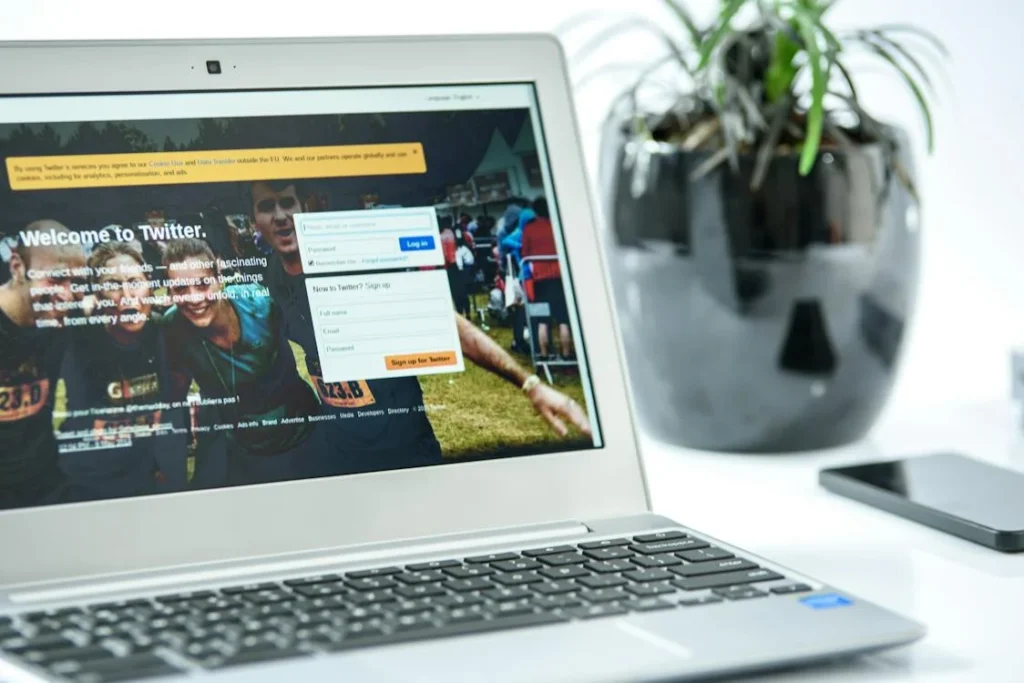If you run a business, or are planning to start one soon, you may want to consider Facebook Ads. They’re a great way of acquiring new customers with very little effort on your part. It’s not a get-rich-quick scheme, but it can be very beneficial if used strategically as part of your digital marketing campaign.
Understanding Facebook Ads
Facebook ads are an excellent way to increase your reach, build your list, brand your business and get people to convert into leads and buy from you.
But how do Facebook ads work? How can you create a Facebook ad that gets results?
Read on to find out!
What is a Facebook ad?
A Facebook ad is an image or video that appears in the News Feeds of people who are likely to be interested in your business. When someone clicks on the ad, they’ll be taken to your website or landing page where they can learn more about your products and services.
How do Facebook Ads Work?
Facebook ads work by allowing businesses to create and publish ads on the Facebook platform, targeting specific users based on their interests, demographics, and other factors. When a user sees an ad that is relevant to their interests, they can click on it to learn more or take a specific action, such as visiting the business’s website or making a purchase.
To create a Facebook ad, businesses first need to create an account on the Facebook Ads Manager platform. From there, they can select the type of ad they want to create, such as a video ad, an image ad, or a carousel ad. They can then choose the target audience for their ad, using factors such as location, age, gender, and interests to reach the right people.
Next, businesses can create the content for their ad, including the text, images, and videos that will be included. They can then set the budget for their ad, choosing how much they want to spend and over what period of time.
Finally, they can publish their ad and track its performance, using the Facebook Ads Manager platform to see how many people are seeing and interacting with the ad.
Overall, Facebook ads allow businesses to target specific users on the Facebook platform with relevant ads, and track the performance of those ads to see how effective they are. This can help businesses reach a wider audience and drive more traffic to their website or other online platforms.
Why Use Facebook Ads?

Pros of Facebook Advertising:
1. Huge Audience:
Many Facebook users are active on its app. This makes it easy to target your ads to people who are interested in your product or services, or even those who have already expressed an interest in what you offer.
2. Running Multiple Campaigns:
Multiple campaigns can be run at one time. This can help to create different audiences for each one based on their interests, demographics and other factors that matter most to you. This helps you to control your marketing spend and get better results faster than any other platform out there today.
3. Cost Effective:
Facebook Ads are affordable. Even small businesses can afford them! The cost per click (CPC) rate is much less than Google AdWords when comparing similar keywords across both platforms, which means that small businesses can get more bang for their buck with Facebook Ads due to the fact that they can bid less per click without sacrificing visibility on their target audience’s newsfeeds compared to Google AdWords where the CPC rate is higher than FB.
Cons of Advertising on Facebook:
1. Ad fatigue:
Facebook users may start to ignore ads if they see the same ads repeatedly, leading to a decrease in their effectiveness. This is known as ad fatigue, and it can make it difficult for businesses to get their message across to their target audience.
2. Limited targeting options:
Facebook’s targeting options can be limited, especially compared to other platforms like Google Ads. This can make it difficult for businesses to reach the specific audience they want to target, and can lead to wasted ad spend.
3. Changes in the algorithm:
Facebook’s algorithm is constantly evolving, which can make it difficult for businesses to predict how their ads will perform. This can lead to unexpected changes in ad performance, and can make it difficult for businesses to optimize their ad campaign.
Effective Usage of Facebook Ads Budget

To get the most out of your Facebook ad budget, you should identify your target audience, set clear goals, create compelling ad content, use A/B testing, and monitor and optimize your ads regularly.
Facebook boasts of fetching amazing ROI, proving to be a worthwhile investment by small businesses which have delicate finances, provided you are able to use it effectively.
You can ensure that your Facebook ad campaign is effective and aligned with your business goals by following the steps below:
Steps for Effective Facebook Ads Campaign:
1. Identify your target audience:
The first step is to identify the specific group of people that you want to reach with your Facebook ads. Consider factors such as their demographics, interests, and needs, and use this information to create a target audience for your ads.
Doing a comprehensive market research using market research tools as well as business intelligence tools would serve you well in this step.
2. Set clear goals:
Before you create your Facebook ads, clearly define the goals you want to achieve with your ad campaign. This could include increasing brand awareness, generating leads, improving customer satisfaction, or increasing sales.
3. Create compelling ad content:
When creating your Facebook ads, focus on creating compelling and engaging content that will grab the attention of your target audience. This could include using eye-catching images, videos, or other visuals, as well as compelling headlines and descriptions.
4. Use A/B testing:
Use A/B testing to compare the performance of different versions of your Facebook ads, and see which ones are most effective. This will help you identify the elements of your ads that are working well, and make adjustments to improve their performance.
5. Monitor and optimize your ads:
Regularly monitor the performance of your Facebook ads and use data and insights to continuously optimize and improve your ad campaign. This could involve making adjustments to your target audience, ad content, or budget, to ensure that your ads are reaching the right people and achieving your desired results.
What is a Facebook pixel?
A Facebook pixel is a piece of code that is placed on a website or web page, which allows businesses to track and measure the performance of their Facebook ads. The pixel collects data on the actions that users take on the website, such as making a purchase or filling out a form, and sends that data back to the Facebook Ads Manager platform.
This data can be used to track the success of a Facebook ad campaign, and to identify the specific actions that users are taking in response to the ads. For example, a business could use the data from a Facebook pixel to see how many users are clicking on their ads, how many are visiting their website, and how many are making a purchase.
To use a Facebook pixel, businesses first need to create a pixel on the Facebook Ads Manager platform, and then add the code to their website or web page. Once the pixel is in place, businesses can start tracking and measuring the performance of their Facebook ads, using the data collected by the pixel to optimize and improve their ad campaign.
Overall, a Facebook pixel is a useful tool that allows businesses to retarget audiences in Facebook so as to improve conversions. Adding to it, business intelligence tools can work along with it to help businesses, track and measure the success of their Facebook ad campaign.
By using a Facebook pixel, businesses can collect valuable data on the actions that users are taking in response to their ads, and use that data to improve the performance of their ad campaign.
Related Reads:
- Laws and Regulations that Affect Marketers in the US
- What’s the CAN-SPAM Act all about
- GDPR: How does that affect Your Marketing Campaign?
- What Your Business Must Know of Indian Data Privacy Laws
- How Indian Information Technology Law Protects Customer Data in India
What are Facebook Custom Audiences?
Facebook custom audiences are a targeting option available to businesses that use the Facebook Ads platform. A custom audience is a group of users that a business has identified as being particularly relevant to their ad campaign, based on factors such as their interests, demographics, or previous interactions with the business.
Businesses can create a custom audience by uploading a list of email addresses or other identifying information for the users they want to target. Facebook will then match those users with the corresponding accounts on its platform, and allow the business to target its ads to that specific group of users.
Custom audiences can be a valuable tool for businesses looking to reach a specific group of users with their Facebook ads. By targeting their ads to a custom audience, businesses can increase the relevance of their ads and improve their chances of reaching the right people. This can lead to higher engagement rates and better ad performance. In fact, this should be a marketing goal over all social media channels, including B2B social media channels like LinkedIn which boast of amazing lead conversion rates.
Demographics Of Facebook Ads
The demographics of your target audience is one of the most important aspects of Facebook Ads. The more you know about your target market, the easier it will be to reach them with your ads since by knowing the demographics of the ad audience, businesses can tailor their ad content and targeting to better reach the people they want to target.
Facebook Ads Demographics are used to target your ads at specific age groups and locations. There are two main types of Facebook Ad demographics:
1. Location-Based Targeting:
Location-based targeting is a type of Facebook ad campaign that allows you to target your audience based on their location. You can target people who live in a specific city, state or even country. You can also target those who have recently visited a location. For example, if you own a hotel in New York City and want to attract tourists who are staying in the area, you can create an ad campaign that targets people who have visited any hotel in New York City within the last 90 days.
Facebook has a solution for location-based targeting. With Facebook Ads, you can target people based on where they are at the time of your ad campaign. For example, if you have a restaurant, and you want to target people in the same general area, you can use this feature.
Steps for Location Based Targeting:
- Go to your Facebook Ads Manager and select “Place” from the left-hand menu.
- Select the “Target People” option
- Select “Target by Location” and enter a radius (feel free to experiment with different radii).
- You can now choose whether you want to target people near an address, city or postal code.
- Set up your criteria and submit your ad campaign!
Why Location Based Targeting Works?
Location-based targeting by Facebook Ads benefits your business as it allows your ads to appear when potential customers are most likely interested in what you have to offer.
For example, if you own a restaurant and want to attract consumers from other cities, but don’t want them visiting until they’re ready to eat at your restaurant, then geo-targeting them using their recent location history can help ensure that they see your ads when they’re most likely thinking about eating at restaurants in their area.
This saves you from sending irrelevant traffic from across the country (or world) that may not be ready to eat at your restaurant. It allows you to reach people based on their location history, so that they see your ads even if they’re not physically in the area where you want them to visit.
This can help increase conversion rates by giving potential customers more reasons to visit your establishment when they’re already thinking about it.
2. Age-Range Based Targeting:
Age-based targeting allows you to create ads that are relevant to your audience and helps you get better results. You can tailor your ads to appeal to specific groups of people within a certain age range, while excluding others who don’t fall into that category.
Steps for Age-Range Based Targeting:
- Go to the Facebook Ads Manager and create a new ad campaign.
- In the Audience section, click on the Demographics option and select Age from the list of options.
- Use the age range selector to specify the age range you want to target with your ads. You can choose from predefined ranges, such as 18-24 or 25-34, or you can create a custom range by entering specific age values.
- Once you have selected your desired age range, continue setting up your ad campaign as usual. Your ads will now be shown to users who fall within the age range you specified.
What is The Facebook Generation?
The Facebook Generation is a term used to refer to individuals who grew up using Facebook as a primary form of communication and socialization. This group of people are typically in their mid-20s to mid-30s and are often considered to be the first true digital natives, having grown up with access to the internet and social media from a young age.
As a result, they are highly connected and tech-savvy, and may be particularly receptive to advertising on Facebook and other social media platforms.
The further detailed description about the interests of people of different age groups are as follows:
1. Generation Z (18-24 years):
Individuals in the age group of 18-24 are typically considered to be part of the younger generation and are often referred to as Generation Z” This group of people is known for being tech-savvy and highly connected, with a strong presence on social media platforms such as Facebook.
As a target audience for Facebook ads, people in this age group may be particularly receptive to advertising related to technology, social media, and pop culture. They may also be interested in ads related to fashion, music, and other interests that are popular among their peer group.
2. Millennials (25-34 years):
Individuals in the age group of 25-34 are often considered to be part of the “Generation Y” or “millennial” generation. Just like the Gen-Z, this group of people is also known for being tech-savvy, highly connected, and active on social media platforms such as Facebook. Thus they too, as a target audience for Facebook ads, may be particularly receptive to advertising related to technology, social media, and pop culture.
They may also be interested in ads related to career advancement, personal finance, and other topics that are relevant to their stage of life. This group may also be interested in ads related to travel, fitness, and other leisure activities.
3. Generation X (35-54 years):
Individuals in the age group of 35-54 are often considered to be part of the Generation X or the “middle-aged” demographic. This group of people is typically at a stage in their lives where they are well-established in their careers, have families, and may be in the process of planning for retirement.
As a target audience for Facebook ads, people in this age group may be interested in ads related to home and family, career advancement, and personal finance. They may also be interested in ads related to health and wellness, as well as products and services that can help them improve their quality of life.
4. Baby Boomers (55+ years):
Individuals in the age group of 55 and older are often referred to as “baby boomers” or “seniors.” This group of people may have a different set of interests and priorities compared to younger individuals, and as a result, they may be more receptive to certain types of advertising.
For example, ads related to health and wellness, retirement planning, and financial services may be of particular interest to people in this age group. Additionally, ads related to travel and leisure, as well as products and services designed for seniors, may also be effective for this audience. It’s important to tailor your advertising message and approach to the specific interests and needs of this age group in order to maximize the effectiveness of your ads.
Why Use Age Demographics For Facebook Ads?
Using age demographics for advertising on Facebook can be an effective way to target your ads to the right audience. By specifying the age range of the individuals you want to reach, you can ensure that your ads are being shown to people who are most likely to be interested in your product or service.
For example, if you are advertising a financial planning service, you may want to target individuals in the 55+ age range, as they are more likely to be interested in planning for retirement.
On the other hand, if you are advertising a new video game, you may want to target individuals in the 18-24 age range, as they are more likely to be interested in gaming. By targeting your ads based on age demographics, you can increase their relevance and effectiveness.
Other Demographics
1. Gender
Gender is another important demographic that can help you reach specific audiences on Facebook. If you are selling fitness products or running a weight loss campaign, gender targeting is essential.
For example, if you sell women’s fitness clothing, then targeting women will help ensure that your ad reaches the right people.
2. Relationship status
This is another way to target people based on their interests.
For example, if you sell wedding dresses and accessories, then it makes sense to target people who are engaged or married so that they see your ads while they’re looking for wedding related products and services on Facebook!
3. Education level
If you sell educational products such as language books or software programs designed specifically for students (either in primary school or at university), then it makes sense to target people based on their education level.
For example, if you sell English language books for primary school students, then targeting people who are in primary school will help ensure that your ad reaches the right people.
What is a Facebook Conversion Campaign?
A Facebook conversion campaign is a type of advertising campaign that is designed to help businesses get more customers or sales by targeting people who are likely to take a specific action on their website or app.
For example, a business might use a conversion campaign to target people who have visited their website but have not yet made a purchase, or to target people who have expressed interest in a specific product or service. While a combination of interruption and permission marketing, this can be used with great effectiveness, if you ensure your marketing 7Ps and the 3P rules of marketing are on point.
Need of The Facebook Conversion Campaign:
A Facebook conversion campaign can be a valuable tool for businesses because it allows them to target their advertising efforts to people who are most likely to take a specific action, such as making a purchase or signing up for a newsletter.
This can help businesses get more value from their advertising budget by ensuring that their ads are being seen by the right people, at the right time. Additionally, Facebook’s conversion tracking tools allow businesses to track the effectiveness of their ads and make changes to improve their performance over time.
How to Create a Facebook Retargeting Campaign?
Facebook retargeting allows you to target the customers who have already visited your website and show them ads on Facebook. This can be a great way to boost sales, especially if you’re selling products online or in an ecommerce store.
Ways to Set Up Your First Facebook Retargeting Campaign:
1. Set Up A Custom Audience:
This is a list of people who have visited your website, so it’s important that you only include people who are actually interested in your products or services. You can create this custom audience by uploading a list of email addresses or phone numbers, or by using Facebook’s lookalike audiences feature.
2. Create A Campaign:
Like other types of Facebook ads, you’ll need to select an objective for your ad campaign — whether you want people to click through to your website or install an app. If you’re using the lookalike audience feature, select “Website Conversions” as the objective when creating your campaign.
3. Targeting Options:
You’ll also need to decide where your ads will appear — either on mobile devices or desktop computers — and whom they’ll reach through personalization categories like location and interests.
Keep in mind that creating a successful retargeting campaign on Facebook requires careful planning and attention to detail. You should regularly monitor the performance of your campaign and make adjustments as needed to ensure that your ads are reaching the right people and achieving the desired results.
Wrapping It Up
With a few clicks and by narrowing in the demographics, you can make sure your ads are being seen by the right people at the right time. Keep in mind that not all audiences are created equal. You should regularly monitor your campaign performance and make adjustments as needed to ensure that your ads are reaching the right people and achieving the desired results.
Need help with your business growth? Send us an email at adhip[at]winsavvy.com or book a meeting for free here!
Read Next:
- Ways to Get More Views on Instagram Reels
- How Small Businesses can Use Instagram Reels
- Agile CRM Review: Is it a good CRM in 2023?
Author Bio: Isha Mudgal is part of WinSavvy’s editorial team. She hails from a tech background and writes predominantly on marketing and tech. Follow her on LinkedIn.



















